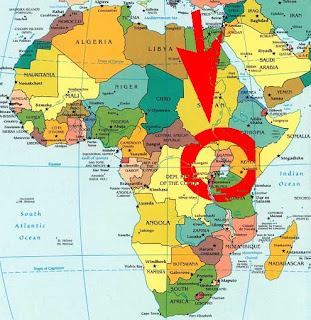Lake Victoria provides an oasis for all types of life. It is home to endless numbers of species excluding the humans who live near by. The lake provides resources for many types of fish, birds and land mammals. Here I will provide you with some images of the animals I found to be the most interesting!
The Rothschild Giraffe makes its home in the land of Kenya and Uganda. This giraffe is the mot endangered giraffe in the world with only a few hundred left in existence.
This is a male and female Jackson's Hartebeast and their offspring feeding in the wetlands of the lake.
This very large fish is known as the Nile Perch. This pre 1960 the Nile Perch was contemplated on being introduced to the lake to lower the populations of less attractive fish for the fisherman. Then in 1960 when the fish was discovered to have already been present in the lake the Nile Perch was manually introduced to the lake in great numbers. Since this time the Nile Perch has become the game fish of choice for native fisherman and game fisherman.
The Egrets of Lake Victoria include several species of Heron. They hunt in the wetlands and marches surrounding the lake for small fish and other creatures.
This large hippopotamus relaxing in the waters probably makes its home in Kenya. Here there is a large population of hippopotamus that congregate along its shorelines.
This is a crocodile and its young lying very low in the waters off the Ugandan shoreline.
All images and information retrieved from: Google Images and Wikipedia

